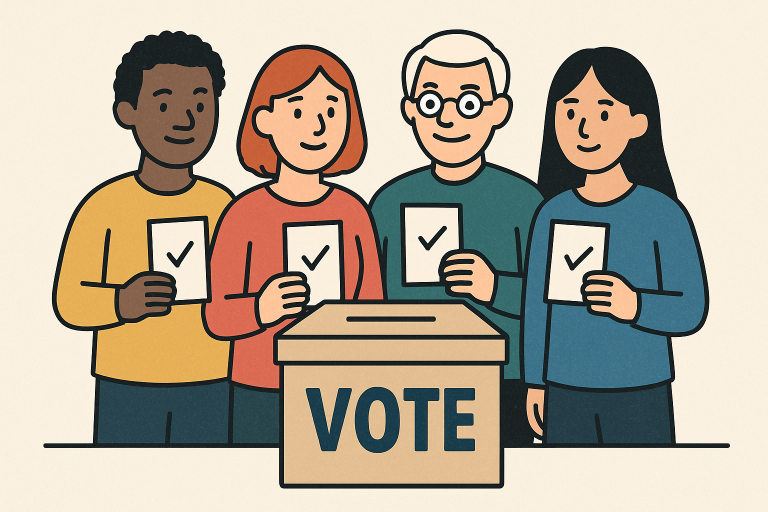Law
How Voting Rights Laws Shape Democracy

Voting rights laws have long stood as pillars supporting the structure of American democracy, acting as both shields against disenfranchisement and foundations for civic empowerment. Throughout U.S. history, the power to cast a ballot has shaped the direction of governance and the evolution of social equity. Ensuring access to the ballot box not only amplifies voices across diverse communities but also establishes the legitimacy of elected leadership. A pivotal event that transformed recent conversations around this topic was the Supreme Court’s 2013 decision in Shelby County vs Holder, which dramatically altered the landscape of voting rights enforcement and remains a vital reference in ongoing legal debates.
As new political and legal challenges emerge, understanding how these laws function is essential to maintaining an inclusive and representative society. Policy shifts, landmark cases, and grassroots activism all play a crucial role in shaping the modern narrative—each influencing how freely Americans can participate in the most fundamental aspect of democracy: voting.
Historical Context of Voting Rights Laws
The battle for equitable voting rights has been a defining feature of American history. In the early years of the republic, state-imposed restrictions such as property requirements, gender-based exclusions, and racially motivated barriers left millions disenfranchised. Over time, movements for abolition, women’s suffrage, and civil rights challenged these inequities, culminating in legal reforms and constitutional amendments that expanded the electorate.
The Reconstruction Amendments—the 13th, 14th, and 15th—supposedly laid the groundwork for universal suffrage, but many Southern states circumvented these protections through literacy tests, poll taxes, and intimidation, particularly targeting Black voters. Resistance to such exclusion eventually galvanized mass mobilization during the Civil Rights Era, resulting in some of the most transformative legislation in U.S. history.
Yet, even after the major legal victories of the 1960s, ongoing efforts were necessary to address persisting mechanisms of voter suppression. A deep understanding of this history underscores the fragility and contestation of the right to vote.
Key Legislation and Its Impact
The Voting Rights Act of 1965
The passage of the Voting Rights Act (VRA) in 1965 was a turning point. Designed to combat racial discrimination, the VRA prohibited literacy tests and authorized federal oversight in locations with histories of disenfranchisement. The immediate impact was profound: voter registration and turnout among African Americans in the South surged, paving the way for a more representative democracy and increased minority participation in governance.
Further Amendments and Laws
Additional reforms, such as the 26th Amendment, which lowered the voting age to 18, further widened the electorate. The National Voter Registration Act of 1993 and the Help America Vote Act of 2002 sought to simplify registration and modernize election administration, continuing the legacy of inclusiveness intended by the VRA.
The consistent thrust of these laws has been to foster equality and prevent unjust obstacles to participation, reinforcing the principle that every citizen’s voice matters.
Recent Challenges and Legal Developments
Despite historic gains, the progress made under the VRA has been tested by significant modern developments. One of the most consequential was the Supreme Court’s decision in Shelby County v. Holder, which invalidated Section 4(b) of the VRA’s formula. The removal of federal preclearance allowed several states to enact laws and regulatory changes that were previously subject to federal approval—ushering in measures such as stricter voter ID requirements and reduced early voting periods.
Most recently, the Supreme Court has agreed to review a new case regarding the Voting Rights Act, focusing on a Louisiana congressional map that adds a second Black-majority district. Legal analysts caution that a ruling weakening Section 2 could enable states to redraw districts in ways that reduce minority influence and affect partisan outcomes for years to come. Continued legal scrutiny and debate exemplify how fragile voting rights protections remain amidst shifting judicial priorities.
State-Level Initiatives to Protect Voting Rights
States have increasingly stepped forward to cement voting protections where federal oversight has receded. California’s Voting Rights Act of 2001 stands out for empowering minority groups to challenge at-large electoral systems that have been proven to dilute minority voting power. Similarly, Virginia implemented its own state-level Voting Rights Act in 2021, which requires preclearance for changes that could impact voting and outlaws racial discrimination in the voting process.
These efforts are complemented by legislative activity in other states, aimed at expanding early voting, mandating same-day registration, and protecting against discriminatory voting practices. Conversely, many states have moved to restrict voting access, demonstrating the highly divergent landscape that now characterizes election law across the United States. State action often serves as a bellwether for national trends—whether to reinforce protections or institute barriers.
The Role of Voting Rights in Modern Democracy
Free and fair access to voting is essential for maintaining societal trust and institutional legitimacy. When the electorate is broad and diverse, public confidence in government increases and policy outcomes better reflect the will of the people. Conversely, barriers to voting fracture civic unity and undermine the core ideals of representation and accountability.
Robust voting rights lead to more responsive legislative bodies and foster a culture of civic participation. Preserving these rights is therefore crucial to maintaining a vibrant and enduring democracy.
Final Thoughts
The journey to secure, strengthen, and uphold voting rights illustrates the dynamic relationship between law and democracy. Progress may be challenged, but vigilance, advocacy, and legal action remain essential to defending the right to vote for all Americans. An informed citizenry, understanding both the historical context and present challenges, is best positioned to support inclusive and effective electoral systems for generations to come.

-

 food2 months ago
food2 months agoCalamariere: How to Perfectly Prepare at Home
-

 Blog2 months ago
Blog2 months agoSimpcit6: Redefining Simplicity in a Complex World
-

 Blog2 months ago
Blog2 months agoBaddi Hub: An Emerging Industrial and Business Hotspot
-

 Crypto2 months ago
Crypto2 months agoCrypto30x.com vs Other Crypto Sites – Best Bitcoin Tools?
-

 Technology2 months ago
Technology2 months agoYourAssistantLive com: The Future of Smart Digital Assistance
-

 Technology2 months ago
Technology2 months agoEdivawer Explained: Transforming Your Digital Experience
-

 food2 months ago
food2 months agoHürrilet Tea: Tradition, Flavor, and Wellness in Every Sip
-

 Technology2 months ago
Technology2 months agoOmbudsmänner: A Global Perspective on Advocacy